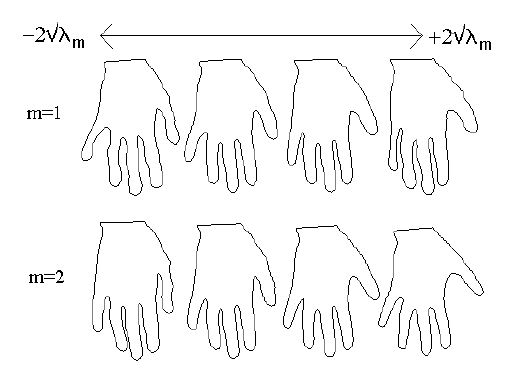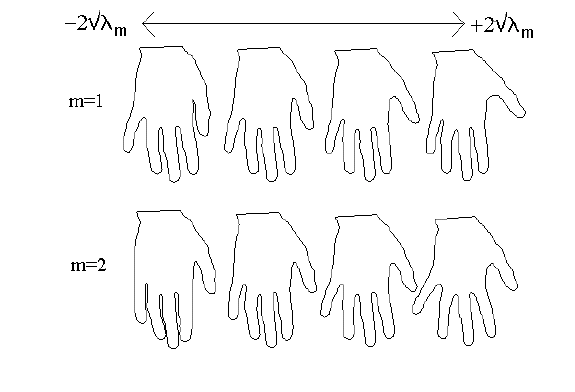 PDF version of this entire document
PDF version of this entire document
The most basic idea is that shapes can be modeled by applying warps to a given correspondence between them (e.g. landmark points). These warps manipulate the correspondence and can therefore produce better shape models. An optimiser is used to warp the correspondence in a fashion that is constructive.
Figure ![[*]](/IMG/latex/crossref.png) shows that selecting landmark points arbitrarily
(or just selecting points that are equally spaced) leads to a model
which is poorer than one where careful manual selection of correspondences
was involved (as shown in Figure
shows that selecting landmark points arbitrarily
(or just selecting points that are equally spaced) leads to a model
which is poorer than one where careful manual selection of correspondences
was involved (as shown in Figure ![[*]](/IMG/latex/crossref.png) ).
).

|

|
By comparing the two figures, it should become evident that if one
selects the wrong correspondences, one will obtain poor models. The
model of the hand should ideally be capable of encapsulating something
which does not result in distortions of a natural form of a hand,
as illustrated by the first mode of variation in Figure ![[*]](/IMG/latex/crossref.png) (notice how thickness of the fingers varies).
(notice how thickness of the fingers varies).
This chapter addresses the need to find good correspondences and explores some previous work. In particular, it considers an approach where establishing correspondence is posed as an optimisation problem, where the aim is to select the correspondences between shapes in the training set that result in the best model.
This correspondence-by-optimisation approach requires 3 things:
Roy Schestowitz 2010-04-05